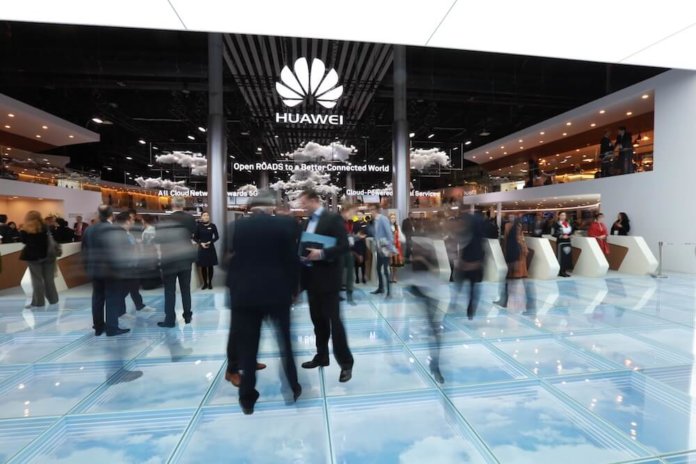
It could be said that Huawei is like the Rorschach Test of global tech companies. How you define them depends on your perspective and interpretation. They are a B2B supplier of networking hardware and systems, just as they are a B2C major player in the smartphone market. They are a state-associated company built on government connections and contracts, just as they are a shining example of capitalism within communist China. They are a privately-owned company but report as if they are publicly-owned.
What is beyond interpretation is that Huawei is a textbook example of how constantly adapting, evolving and innovating can lead to long-term, global success. Huawei has never stopped pushing itself to reach higher and go farther. The results speak for themselves.
Headquartered in Shenzhen, Huawei is in the mobile, fixed broadband network, technology, smartphone, and tablet computer fields, just to name a few. They have over 180,000 employees in 170 different countries and generated more than 500 billion dollars as of 2016.
There can be no question these are remarkable achievements for a company that was founded almost accidentally.
An Unlikely Beginning
The heart and soul of Huawei is its founder, Ren Zhengfei, who started the company after serving as an engineer in China’s People’s Liberation Army. In the 1970s, the government was in desperate need of university-educated people to help with their garment factory. Zhengfei was recruited at this time.
That was how I entered the military,” said Zhengfei, “I think that was a good thing to do.”
Huawei’s very first business model was reselling private branch exchange (PBX) which they imported mostly from Hong Kong. Zhengfei saw a huge technological gap and, at the same time, a huge opportunity to develop home-grown technology. Zhengfei wanted to see China start manufacturing their own technology rather than importing it from elsewhere. To do this, he put together an R&D team and began reverse engineering based on the units they were bringing in.
Even from those earliest days, Zhengfei had a very specific strategy when it came to R&D. While others preferred a top-down directive method, he believes in allowing the experts to explore the areas they felt were most important.
“We have a long-term strategic goal, which is to adapt to massive amounts of data in the future,” he said in an interview with Forbes Magazine. “With this goal in mind, we just keep opening up. Any scientists who understand this is welcome to join us. We don’t fully understand what these scientists are studying, so we don’t have the capacity to select them. Rather, we let them form a system on their own. Many great breakthroughs are not planned, but happen by chance.”
Just three years after the company’s founding, they had amassed an R&D staff that totaled nearly 600. They had successfully launched their own PBX switches which were targeted towards small and medium-sized businesses. In 1993, Huawei enjoyed their first major breakthrough with the launch of the C&C08 program controlled telephone switch, easily the most powerful of its kind in China at the time.
By 1996, Huawei locked in its first contract to build a national network for the People’s Liberation Army. This was a major step in securing their position as a growing leader in the technology space in China.
Despite this early success, the company never took its foot off the gas in terms of pushing R&D. The company aggressively recruited the top University students from around the country and made a point to earmark 10% of its profits to go back into R&D.
Expansion in the 21st Century
As the 21st century rolled around, Huawei was already working towards expanding beyond being just a local company. They wanted to explore new fields in new parts of the world. With international sales reaching $100 million by the year 2000, Huawei ramped up its investment in R&D facilities around the world. These include one in Stockholm, Sweden and four that were set up in the United States.
One of their biggest breakthroughs early in the twenty-first century was directly related to innovation, but not of the technological kind. Rather, it was the way they took a new approach to customer service that resulted in signing the major international deal. In 2004, Huawei Inked a deal with the Amsterdam-based Telfort B.V, a mobile telecommunications provider, to produce a distributed base station. While this cost less and required less energy to operate, the most appealing part was what Huawei offered in terms of free testing and technical support. Rather than having tech support open from Monday to Friday during regular business hours as was the norm then, Huawei promise to make themselves available 24/7 at no extra charge.
In the August 2017 article Conquering Europe Through a Joint Innovation Strategy: How Huawei Blends Cultural Revolution and Customer-Centric Principles, the European Financial Review touches on the secret of Huawei’s global success.
“Huawei’s innovation model had been closely tied to its heavy investment in R&D, and to the low cost of Chinese engineering talent, which meant that Huawei was able to assign more engineers to projects than its competitors. Huawei also made huge investment in technology testing, thereby communicating the emphasis it placed on quality while still offering custom solutions that are configured to meet the needs of individual customers.”
This then led to another major breakthrough in 2005 with their partnership with the British multinational telecommunications company, Vodafone. Through the partnership, Huawei would build and install more than 10,000 base stations within one year. this was easily two to three times faster than any other of the bids projected.
It wouldn’t take long for the rest of the world to see how Huawei was rapidly expanding through the Western world and leaving their mark everywhere they went. In 2010, Fast Company named Huawei the fifth most innovative company in the world. Later that same year, Huawei won three Global Telecom Business Innovation Awards including “Green base station innovation”, “Wholesale network innovation” and “Consumer voting innovation”.
From B2B to B2C
Not satisfied with the imprint Huawei left in the global telecommunications network industry, Huawei wanted a locally-produced smartphone that would compete with the industry giants, Apple and Samsung.
“We plan to scale down the proportion of our carrier network business to 50 to 60 percent and increase our focus on the consumer business,” Huawei Rotating CEO Eric Xu told the Korean Times in 2014. “We are transforming from B2B to B2C — building a brand that people know,” added Shao Yang, vice president of marketing, consumer business.
At the time, this appeared to be a Sisyphean task if there ever was one. Apple and Samsung combined to sell more smartphones than all of the other competitors combined. And yet, by 2017 Huawei had surpassed Apple as the second largest seller of smartphones worldwide. A fact even more impressive when one considers that to date, Huawei has yet to significantly breakthrough in the US market. This is something Zhengfei plans to address in the near future.
“While widely promoting innovation, we should learn from the US’s best practices and strong mechanisms,” he told Forbes. “Of course, we hope to invest there. Huawei doesn’t have any conflicts of interest with the US, and our investment there will also benefit the US.”
A Look Ahead For Huawei
After you’ve created a national industry where none existed before, dominated the B2B business market around the globe, and overtook one of the smartphone retail giants, what could possibly be next for Huawei? In his interview with Forbes, Zhengfei indicated that strategic growth was the key to securing the future.
“In the future, the Internet of Things, smart manufacturing, and Big Data will place high requirements on the pipe infrastructure. Our responsibility is to provide connections, specifically, equipment that enables connections. The global market is huge, and we will not be able to achieve success in all countries. It will be already good if we can grow in the countries where we can operate.”
After what they’ve accomplished in their first 30 years, who could possibly bet against them?









